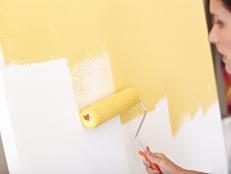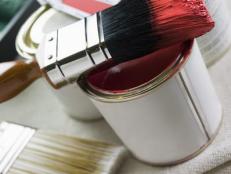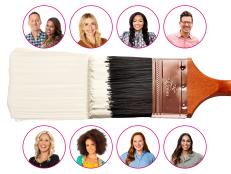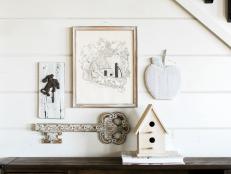16 Ways to Make Painting Less Painful
It's one of the easiest ways to transform a room, but painting can be tough! HGTV Magazine shares tips to ease the sting.
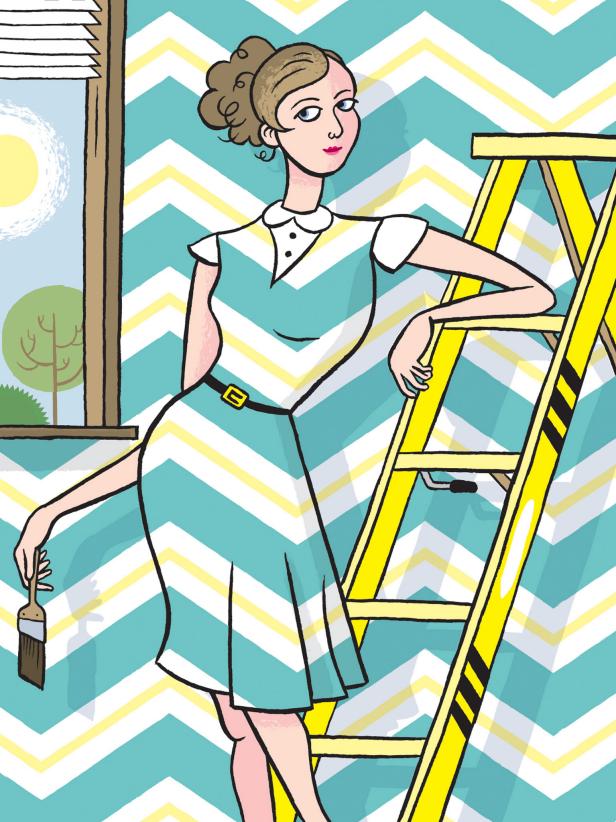
Dan Zettwoch
Look at your clothes for color inspiration
Not sure which paint hue will make you happiest? Go through your wardrobe. If you wear mostly neutrals, opt for tan or gray. If you go for cooler hues, like blues and greens, stick with those. If you have a lot of warmer shades, try red or orange.
Get samples
Once you've found hues you like, buy sample pots to test at home. Paint two coats on poster board-the bigger the swatch, the better-or try a SureSwatch ($1, The Home Depot stores), a clear, paintable decal. Move the swatch to see how the color looks in different light and next to curtains and rugs.
Do the math
You've probably heard that one gallon of paint covers 350 square feet-but that doesn't mean much if you don't know your room's size. To figure out how much paint to buy, measure each wall's width and height, then put the numbers in a paint calculator (try paintquality.com). If the room has nooks or built-ins, add a gallon to be safe.
Clear your schedule
Painting may take longer than you think-figure you'll need eight hours to paint the walls of an average-size living room (with two coats). Add another hour or two to move furniture, put down drop cloths, tape off trim, and clean up when the job's done.

Dan Zettwoch
Ask for a deal
If you're painting your entire house or doing a large job that requires 10 gallons or more, some stores will give you a contractor's discount. It might be only 5% or 10%, but that adds up!
Wear gloves
To beat blisters, slip on a pair of latex or cotton gloves before painting. Or try nitrile-coated work gloves ($3.50, Sherwin-Williams stores), which have a rubberized palm to give you a better grip. To hydrate and soothe tired palms once the job is done, slather on some coconut oil.
Line trays cheaply
Rather than spending money on disposable liners for paint trays, line them with a piece of one-millimeter-thick plastic sheeting-the same kind you use to cover floors and furniture-and tape it to the edges of the tray. Once you're done, just throw out the plastic.
De-fuzz rollers
To keep fuzz from a paint roller off your wall, de-lint the roller with masking tape before you start working. Or try a high-density cover, like Purdy's White Dove disposable nine-inch roller cover (from $5, paint stores).
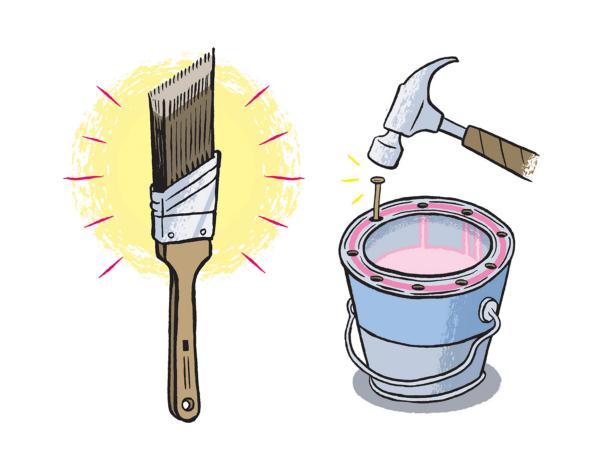
Dan Zettwoch
Get a good brush
Instead of splurging on a variety of brushes, buy just one quality one, like an all-purpose two-and-a-half-inch angle brush with polyester or nylon bristles. Keep it in good shape by washing it with soap and water as soon as you're finished working.
Sit 'n' paint
Squatting to paint along baseboards can be a killer thigh workout-but a real pain in the back. Try sitting on a flipped-over five-gallon bucket or a couch cushion covered with a plastic drop cloth. If you prefer kneeling, slip on a pair of gardening kneepads for comfort.
Stop drips
Prevent paint from running down the side of the can or pooling in the rim by using a hammer and a nail to punch holes about every two inches along the inner rim.
Paint during the day
And keep the lights on while you work so you can see mistakes more easily. Also, if you're painting on a humid day, turn the AC a little cooler than usual. It'll help paint dry faster by eliminating dampness in the air.
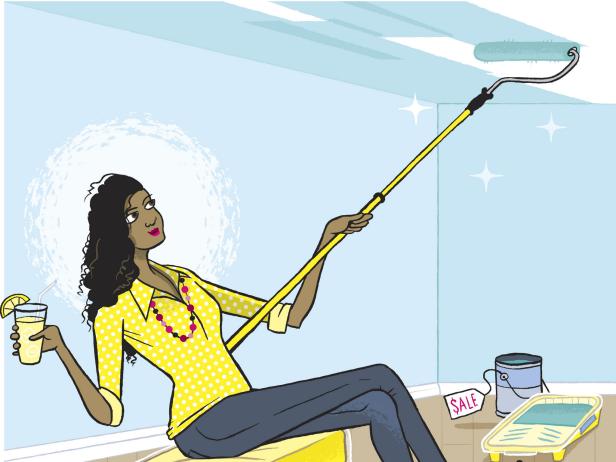
Dan Zettwoch
Use a paint pole
Cut down on trips up and down a ladder-and avoid a wrenched back-by attaching an extension pole to a roller when painting the ceiling or high walls. It gives you the leverage to do twice the work with half the effort!
Prime wisely (or not at all)
You don't always have to spring for primer. It's usually necessary in only three cases: if you're painting untouched drywall or plaster, if you're painting over oil-based paint with latex (primer will help the latex stick), or if you're painting a light color over a very dark color (it'll cover up the bold hue).
Work in small batches
A paint tray balanced on top of a ladder is a disaster waiting to happen. When doing edge work near the ceiling, pour paint into a small, easy-to-hold plastic container.
Fix minor bloopers
Don't despair if you discover hardened paint clumps on the wall once everything is dry. Slice them off with a razor blade or knife, sand down the edges with medium-grit sandpaper, then dab the spots with paint.
Our experts: Terry Begue, owner of Begue Painting Inc., Hartville, OH; John Burbidge, creator of howtopaintahouseright.com and author of Watching Paint Dry; Janie Lowe, cofounder of Yolo Colorhouse; Gretchen Schauffler, founder and creative director of Devine Color; Jonathan Teasdale, owner of Jonathan Teasdale Painting, New York, NY; Debbie Zimmer, Paint Quality Institute director of communications, dow coating materials







